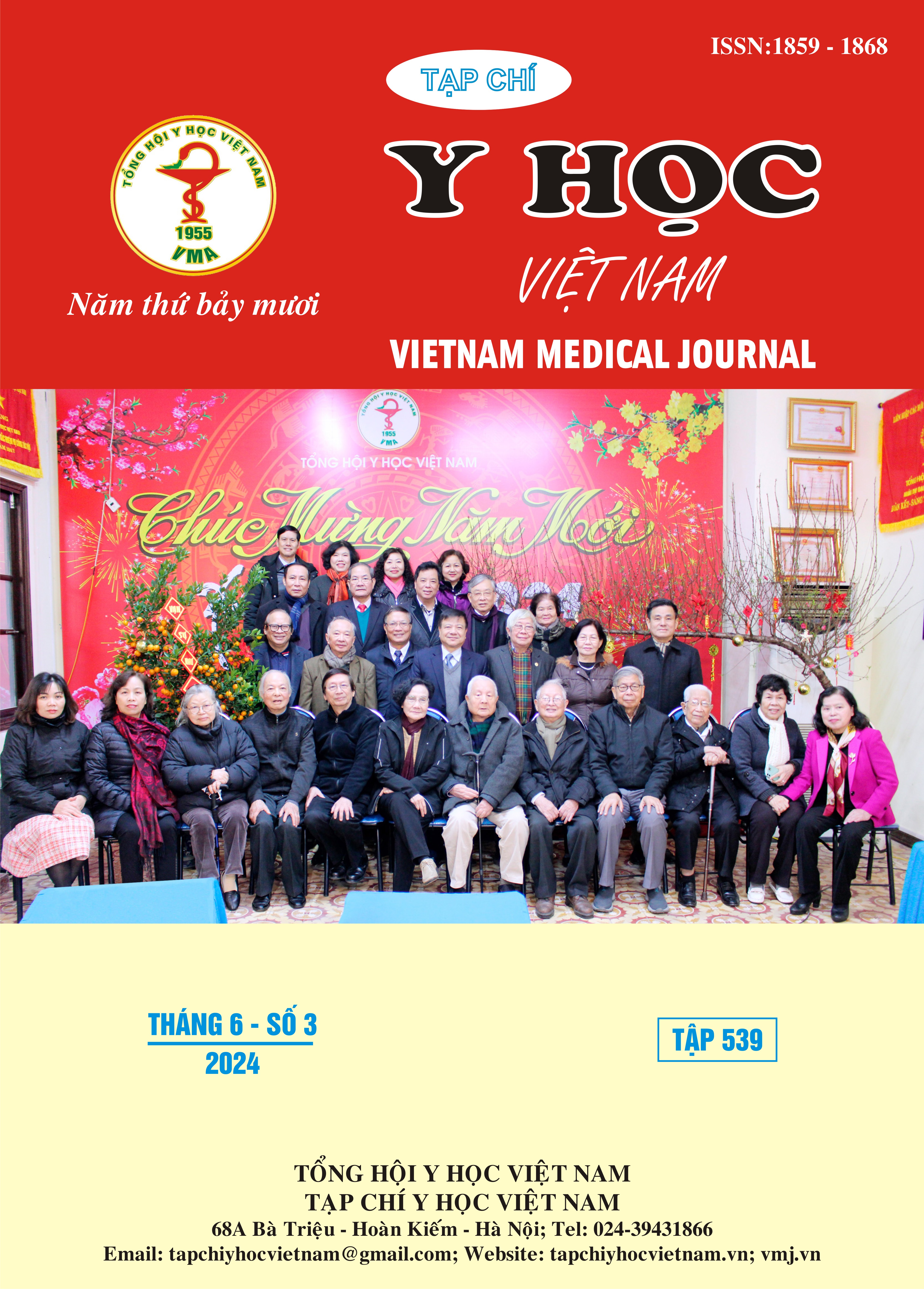THE RELATIONSHIP BETWEEN Ki67 IN GRADING AND PROGNOSIS OF SUPRATENTORIAL MENINGIOMAS
Main Article Content
Abstract
Objective: Meningioma is the very important type of tumor that occur in central nervous system (CNS) that represented 1/3 of whole tumor of CNS. The aim of study is the aim of the present study is to evaluate the use of immunhistochemical expression of Ki67 for predicting the grades of meningioma, which are important in their prognosis, and line of treatment. Materials and methods: Cross sectional study for two hundred two patients with meningioma were collected from the Deparment of Neurosurgery, University Medical Center at Ho Chi Minh City, during the period from January 2018 to November 2022. The data for cases were collected to study the age, gender and grade of tumor. Staining hematoxylin/Eosin (H&E) for histological inputting and classifying of the tumors and immunohistochemically workup for Ki67 done. Results: 282 patients with age, mean (44 ± 12) years old, in current study 65,2% of patients was females and 34,8% of patients was males, 79,1% of patients have low Ki67, 14,9% of them have intermediate Ki67 and 6% of patients with high Ki67. Most of patients with age group 40-59 years old (51%). The mean and SD of Ki67 in (%) according to grades of meningioma I, II and III as following: (0,5 ± 0,07), (7 ± 5,21) and (38 ± 0,15) respectively. In current study, also there is significant association between grades of meningioma and Ki67; 100% of grade I with low level of Ki67, 100% of grade III with high level of Ki67 and 64% of grade II with intermediate level of Ki67. The mean Ki67 was significantly more in meningioma grade III than in patients with grades II and I as WHO 2016 classification. Conclusion: Utilization of markers for proliferation (Ki67 labeling index) in combination with histopathological features may help in the identification of biologically aggressive meningioma.
Article Details
Keywords
Ki67, grades of meningioma, prognosis
References
2. Holleczek B., Zampella D., Urbschat S., Sahm F., von Deimling A., et al. (2019), "Incidence, mortality and outcome of meningiomas: A population-based study from Germany". Cancer Epidemiol, 62, pp. 101562.
3. Kim Y. J., Ketter R., Steudel W. I., Feiden W. (2007), "Prognostic significance of the mitotic index using the mitosis marker anti-phosphohistone H3 in meningiomas". Am J Clin Pathol, 128 (1), pp. 118-25.
4. Li X., Zhao J. (2009), "Intracranial meningiomas of childhood and adolescence: report of 34 cases with follow-up". Childs Nerv Syst, 25 (11), pp. 1411-7.
5. Madsen C., Schrøder H. D. (1997), "Ki-67 immunoreactivity in meningiomas--determination of the proliferative potential of meningiomas using the monoclonal antibody Ki-67". Clin Neuropathol, 16 (3), pp. 137-42.
6. Mukherjee S., Ghosh S. N., Chatterjee U., Chatterjee S. (2011), "Detection of progesterone receptor and the correlation with Ki-67 labeling index in meningiomas". Neurol India, 59 (6), pp. 817-22.
7. Ostrom Q. T., Gittleman H., Fulop J., Liu M., Blanda R., et al. (2015), "CBTRUS Statistical Report: Primary Brain and Central Nervous System Tumors Diagnosed in the United States in 2008-2012". Neuro Oncol, 17 Suppl 4 (Suppl 4), pp. iv1-iv62.
8. Roser F., Samii M., Ostertag H., Bellinzona M. (2004), "The Ki-67 proliferation antigen in meningiomas. Experience in 600 cases". Acta Neurochir (Wien), 146 (1), pp. 37-44; discussion 44.


